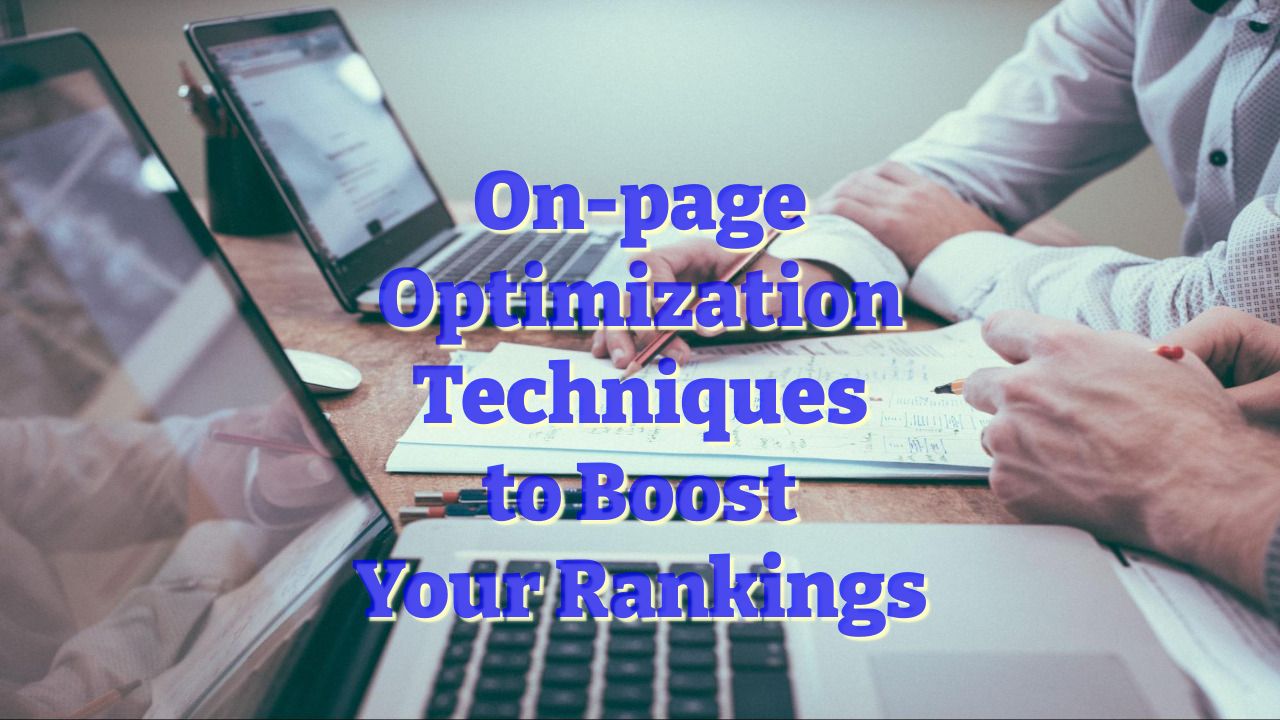In the world of SEO, on-page optimization is an essential part of any successful digital marketing strategy. On-page optimization refers to the various techniques used to optimize a website’s individual pages to rank higher in search engine results pages (SERPs).
This article will discuss the importance of on-page optimization and various techniques that can be used to boost your website’s rankings.
Importance of On-page Optimization

On-page optimization is essential because it helps search engines understand your website’s content better. By optimizing your website’s individual pages, you can improve your website’s relevancy and authority, which can help boost your rankings.
On-page optimization also helps to improve user experience, making it easier for users to navigate your website, find what they are looking for, and engage with your content.
On-page Optimization Techniques

Here are some on-page optimization techniques that can help boost your website’s rankings:
Title Tag Optimization
The title tag is one of the most crucial on-page SEO factors. It is the first thing that search engines and users see when they land on your website. Therefore, it’s essential to optimize your title tags to include your primary keywords and accurately reflect the content on your page.
Meta Description Optimization
The meta description is the short description that appears below the title tag in search engine results. It’s an opportunity to entice users to click through to your website. Optimizing your meta description to include your primary keywords and accurately reflect the content on your page can help increase click-through rates.
Header Tags Optimization
Header tags (H1, H2, H3, etc.) are used to structure your content and help search engines understand the hierarchy of your information. Proper header tag optimization can help improve your website’s relevancy and authority.
Content Optimization
Content optimization involves creating high-quality, relevant, and engaging content that incorporates your primary keywords. Your content should be well-structured, easy to read, and provide value to your audience.
Image Optimization
Optimizing your website’s images can help improve load times and provide additional opportunities to include primary and secondary keywords. Use descriptive filenames and alt tags to help search engines understand the content of your images.
Internal Linking Optimization
Internal linking involves linking to other pages within your website. It can help improve user experience by making it easier to navigate your website and improve your website’s authority by distributing link equity.
URL Structure Optimization
URL structure optimization involves creating descriptive and easy-to-read URLs that accurately reflect the content on your page. A well-optimized URL can help improve click-through rates and improve your website’s relevancy.
Mobile Optimization
Mobile optimization involves ensuring that your website is mobile-friendly and responsive. With more people using mobile devices to access the internet than ever before, mobile optimization is essential for improving user experience and search engine rankings.
Conclusion
On-page optimization is an essential part of any successful SEO strategy. By optimizing your website’s individual pages, you can improve your website’s relevancy and authority, which can help boost your rankings. Use the techniques outlined in this article to help improve your website’s on-page optimization and improve your search engine rankings.

